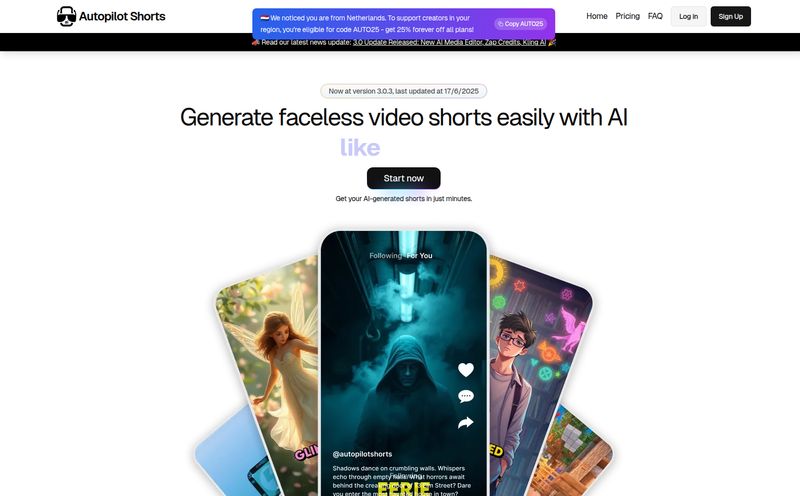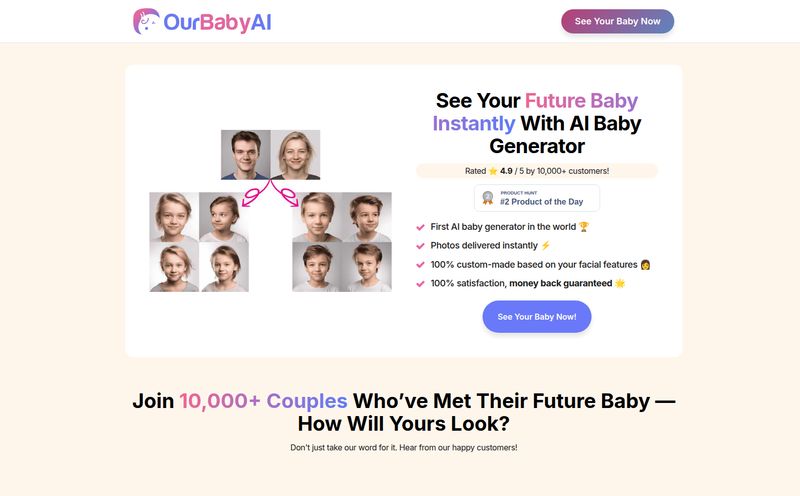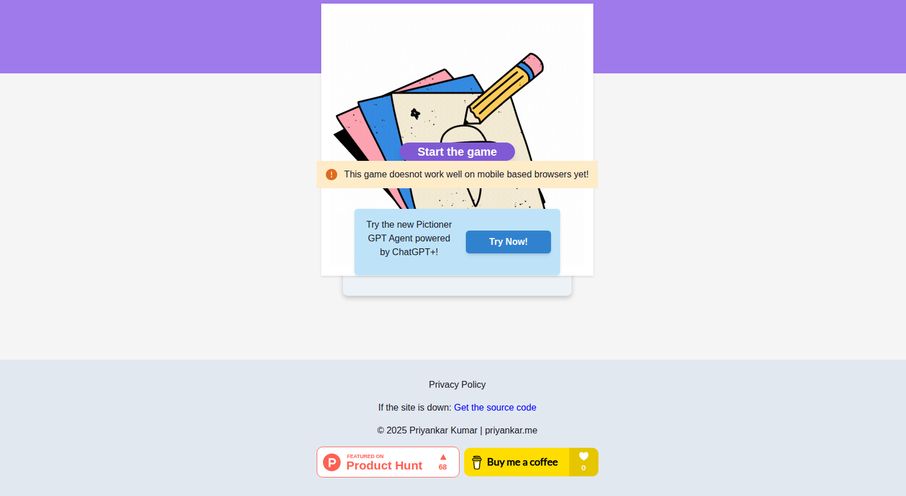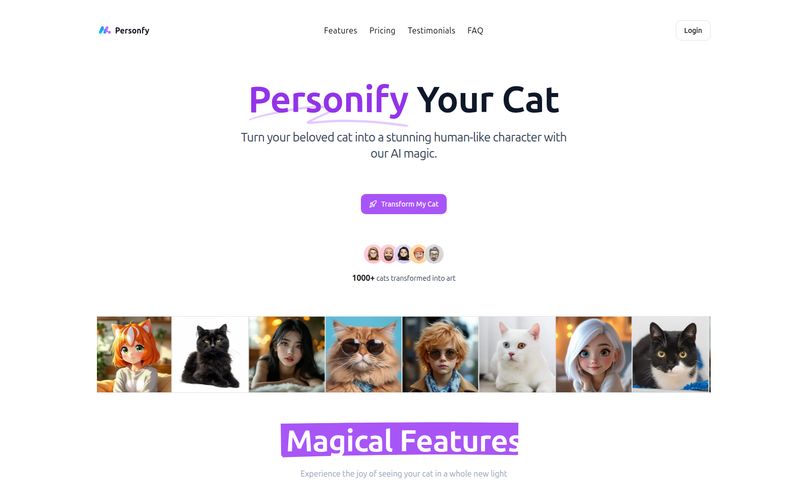As someone who’s been neck-deep in the SEO and digital trends world for years, I get a little thrill from discovering a new tool. You know the feeling. It's that little dopamine hit when you find something that promises to make your workflow smoother, your content shinier, or just lets you do something incredibly cool. The AI space right now? It's like a firehose of that feeling. Every single day, there's a new AI writer, a new video generator, or a new art platform promising to be the next big thing.
So, when I first heard whispers of a platform called 'Empty Canvas', my interest was piqued. The name itself is evocative, right? A blank slate, full of potential. The description I managed to dig up sounded fantastic: an all-in-one AI platform for creating, searching, and even chatting with art. In a market dominated by giants like Midjourney and DALL-E, a nimble tool with a unique angle can really make waves. I was ready to check it out, maybe write a glowing review, and add it to my little black book of useful tools.
I typed in the URL, emptycanvas.art, and waited for the magic. And then... nothing. Just a dark blue screen and a price tag.
What Was Empty Canvas Supposed to Be?
Before we get to the digital tombstone, let's talk about the ghost. What was the promise of Empty Canvas? Based on the breadcrumbs left behind, it was aiming to be a pretty neat, streamlined hub for AI art enthusiasts. Not just another generator, but a multi-functional space. The concept was built on three pillars.
The Promise of Instant Art Generation
First and foremost, it was an AI art generator. The marketing chatter claimed it could create “stunning arts in seconds.” This is the table stakes for any AI art tool these days. We’ve all seen the magic of typing a string of words—'a cyber-punk cat sipping bubble tea in a rainy Tokyo alley'—and watching a machine spit out a masterpiece. The appeal is undeniable, and speed is a huge factor. No one wants to wait ten minutes for a render if a competitor can do it in ten seconds. Empty Canvas was clearly positioning itself as a quick, easy-to-use option for everyone, from hobbyists to professionals.
More Than a Generator with Search and Chat
This is where it got interesting for me. Alongside 'Generate,' it offered 'Search' and 'Chat.' The 'Search' function could have been a game-changer. Was it a way to search a community gallery of creations, like DeviantArt for AI? Or maybe a more advanced engine to find specific AI-generated images across the web? Either way, discoverability is a huge challenge in the AI art world, and a good search tool is worth its weight in gold.
But the real head-scratcher was 'Chat.' What did that even mean? I've got a few theories. It could have been an AI chatbot designed to help you write better prompts—a sort of 'prompt whisperer' to refine your ideas. Think of it as a creative partner. Or, and this is the more whimsical idea, maybe it was a way to interact with the art itself? To ask an image about its 'mood' or request variations through conversation. Honestly, who knows. But that little bit of mystery made it all the more compelling.
The Reality Check: A Domain For Sale
So there I was, hyped up on the potential of this cool new platform. And this is what I saw:

Visit Empty Canvas
“Buy this domain.” The owner is offering emptycanvas.art for a cool 480 USD. It's not a 404 error or a server-down message. It’s a for-sale sign on the door of a business that, for all intents and purposes, doesn't exist anymore. It’s a digital ghost town. All that promise, all that potential, just… gone. Replaced by a generic landing page from a domain broker.
I’ve seen this before, but it never ceases to be a bit jarring. It’s a stark reminder of the brutal reality of the tech world, especially the current AI gold rush. For every successful launch, there are dozens of projects that burn out, run out of cash, or just quietly fade away, leaving behind nothing but an available domain name and the faint echo of a good idea.
So, What Happened Here?
We’ll probably never know teh full story. Maybe the founders were a couple of developers who built a cool prototype but couldn't secure funding. Maybe a bigger company swooped in and acqui-hired the talent, leaving the project to wither. Or maybe they just realised that competing with the behemoths of the industry was a tougher climb than they anticipated.
This isn't a new phenomenon. I remember the dot-com bubble of the late 90s. The landscape was littered with brilliant ideas that simply didn't have a sustainable business model. The AI boom feels eerily similar. The barrier to entry for creating a tool is lower than ever, but the barrier to success? That’s higher than ever. You need more than a good idea; you need marketing savvy, a community, a solid monetization strategy, and a whole lot of luck.
What About That Missing Pricing Page?
One of the 'cons' listed in the data I found was the lack of pricing information. Well, now we know why! It’s hard to put a price on a product that’s vanished into thin air. Had it launched, Empty Canvas likely would have adopted one of the common models we see today. Perhaps a credit-based system, where you buy tokens for generations, or a tiered subscription model like Midjourney's (e.g., $10/month for a basic plan, $30/month for more features and faster generation). Given its positioning as a tool for 'everyone,' I would have bet on a free tier with limited generations to draw people in. But alas, it’s all just speculation now.
Lessons from a Digital Apparition
The story of Empty Canvas, brief and mysterious as it is, offers a valuable lesson. It shows the incredible volatility of the AI market. It’s a reminder to be cautiously optimistic about new tools. Get excited, but maybe don’t build your entire business workflow around a brand-new platform until you see it has staying power. This tale underscores the importance of a strong online presence, community engagement, and a clear path to monetization. Without those, even the most brilliant idea can end up as a footnote on a domain broker's website.
Frequently Asked Questions About Empty Canvas
What was Empty Canvas AI?
Empty Canvas was envisioned as an AI art platform that would allow users to generate new art, search for existing AI-generated art, and interact with the platform through a chat feature. It was marketed as a fast and easy-to-use tool for everyone.
What were its main features?
The three core features were AI Art Generation (creating images from text prompts), AI Art Search (finding AI art), and AI Art Chat (a somewhat mysterious feature for interacting with the platform or art).
Is Empty Canvas AI still available?
No. As of late 2023, the domain name emptycanvas.art is up for sale, indicating the project is no longer active or was never fully launched to the public.
Why do some AI startups disappear like this?
The AI market is extremely competitive. Startups can fail for many reasons, including lack of funding, intense competition from larger companies, an unsustainable business model, or the founders moving on to other projects. It's a common occurrence in any tech boom.
Are there good alternatives to what Empty Canvas promised?
Absolutely. For AI art generation, tools like Midjourney, DALL-E 3, and Stable Diffusion are industry leaders. For searching and discovering AI art, platforms like Artbreeder and community hubs on Discord and Reddit are great resources.
Pour One Out for a Good Idea
So, here's to Empty Canvas. We hardly knew ye. Your story is a short one, a digital ghost story in the sprawling, chaotic city of AI. It's a shame the canvas was never filled, but it serves as a fascinating snapshot of a moment in time. In this industry, ideas are currency, but execution is everything. Now, if you'll excuse me, I have 480 bucks and a dream... just kidding. Or am I?
Reference and Sources
- The domain listing was found at emptycanvas.art, which is a webpage generated by the domain owner using Sedo Domain Parking.
- For further reading on the AI startup environment, articles from publications like TechCrunch often cover the funding and challenges within the industry.



